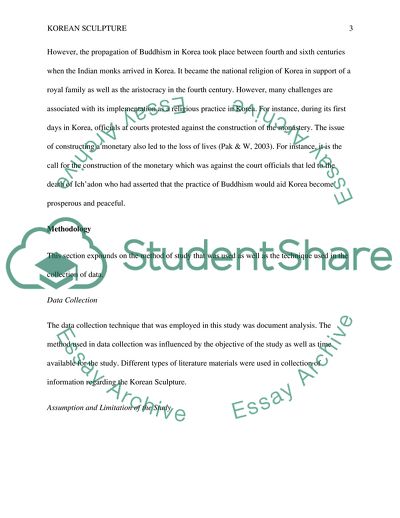Cite this document
(Korean Sculpture Report Example | Topics and Well Written Essays - 1250 words, n.d.)
Korean Sculpture Report Example | Topics and Well Written Essays - 1250 words. https://studentshare.org/visual-arts-film-studies/1847622-korean-sculpture
Korean Sculpture Report Example | Topics and Well Written Essays - 1250 words. https://studentshare.org/visual-arts-film-studies/1847622-korean-sculpture
(Korean Sculpture Report Example | Topics and Well Written Essays - 1250 Words)
Korean Sculpture Report Example | Topics and Well Written Essays - 1250 Words. https://studentshare.org/visual-arts-film-studies/1847622-korean-sculpture.
Korean Sculpture Report Example | Topics and Well Written Essays - 1250 Words. https://studentshare.org/visual-arts-film-studies/1847622-korean-sculpture.
“Korean Sculpture Report Example | Topics and Well Written Essays - 1250 Words”. https://studentshare.org/visual-arts-film-studies/1847622-korean-sculpture.


